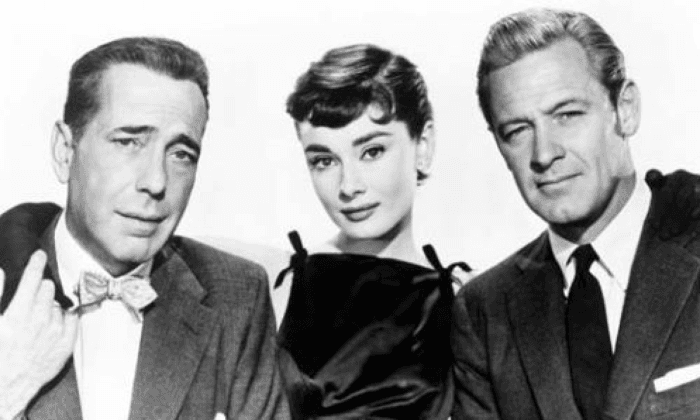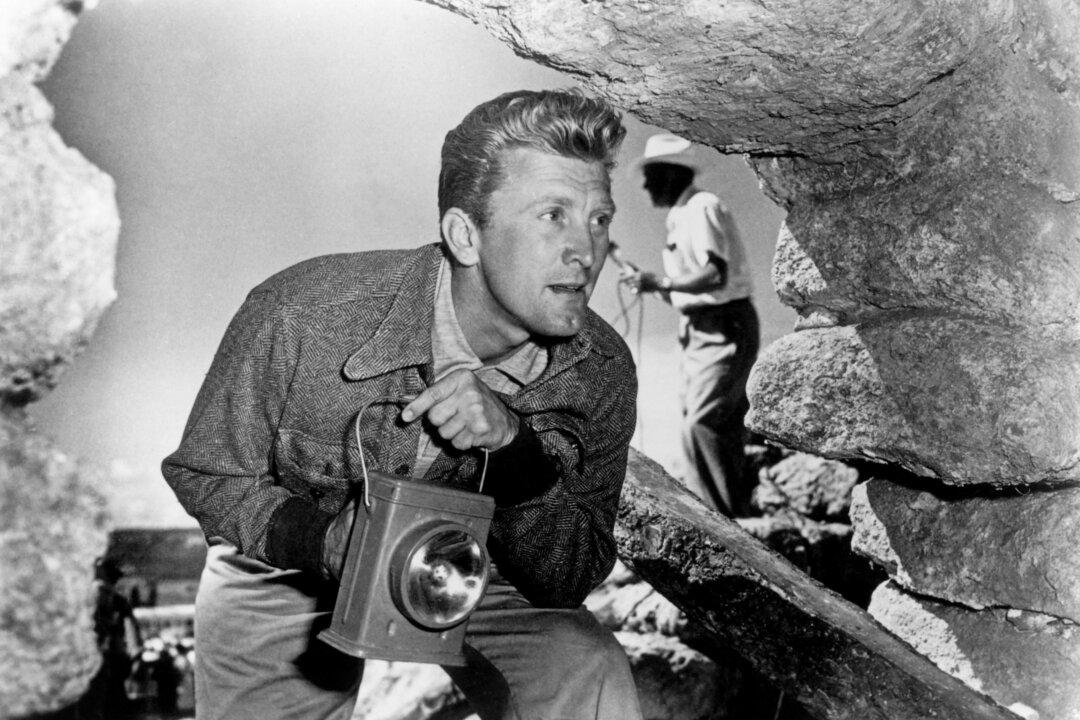The old versus the new is one of the longstanding battles of film lovers. When a beloved movie is remade, arguments inevitably arise over which version is better. While some will love the new innovations of the latest creation, others will insist that the original can’t be beat.
One example of a classic movie with a noteworthy remake is “Sabrina” from 1954, which was famously remade in 1995.
The original movie, which was written and directed by Billy Wilder, starred fashion icon Audrey Hepburn as the title character, with Hollywood legends Humphrey Bogart and William Holden as her two leading men. It was a huge commercial and critical success, winning an Academy Award and a Golden Globe, plus earning numerous major nominations.
The remake starred Julia Ormond as Sabrina, with Oscar nominee Harrison Ford and Greg Kinnear as her co-stars. Unlike its predecessor, this film was a financial disappointment. It received fairly positive reviews, despite some unfavorable comparisons to the original. It earned two Golden Globe and two Academy Award nominations but no major wins.
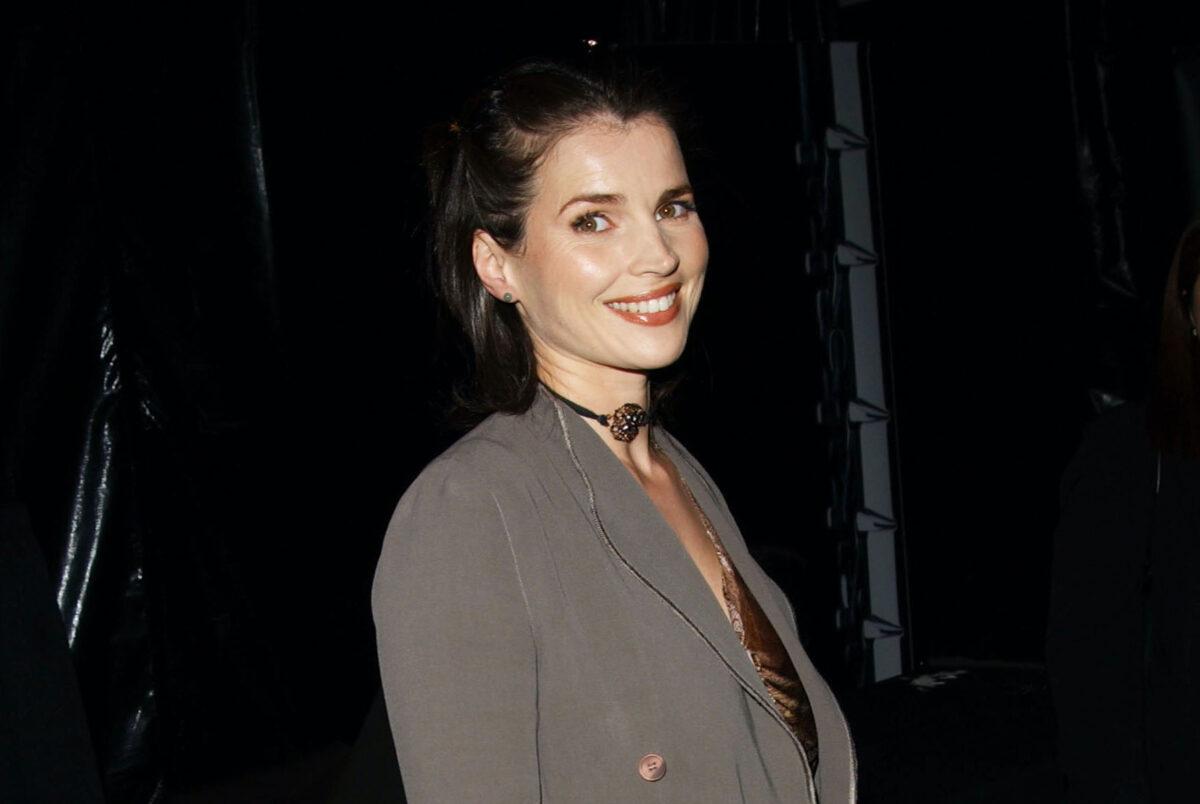

Two Stories
The two films’ basic stories are the same. Sabrina Fairchild, a British chauffeur’s daughter, has grown up on the Long Island estate of her father’s wealthy employers, the Larrabees. The Larrabees have two sons, sensible businessman Linus and impulsive playboy David. All her life, Sabrina has loved David from afar, while he has drifted from one debutante to the next.Once she is grown, her father sends her to Paris, where she becomes sophisticated and mature. When she returns two years later, transformed by Parisian glamor, David is smitten! As Sabrina’s romantic dreams start coming true, Linus has other plans. An important merger rests on David’s marrying a business partner’s daughter, Elizabeth Tyson. Linus romances Sabrina himself to protect the merger but becomes conflicted when he develops feelings for her.
Some details of the stories differ. While Mr. Larrabee, Sr. runs the family business in the 1954 film, he is deceased in the 1995 version, so his widow runs the company. In the original, Sabrina goes to Paris to attend cooking school; in the remake, she goes to work as a magazine fashion intern and becomes a photographer. The earlier film’s merger involves a durable plastic Linus has designed, made from Mr. Tyson’s sugarcane; in the later film, the Tysons own an electronics company with an indestructible flatscreen TV Linus wants.
The later film also builds the initial relationship between David and Elizabeth from a casual flirtation into a deep romance which David initiates. Elizabeth was transformed from a shallow heiress into a pediatrician whose dedication makes David realize his own uselessness. In 1954, David was just a spoiled rich boy who didn’t want to grow up; he didn’t live in his brother’s shadow, as in the remake. In 1995, the romance between Linus and Sabrina is hinted early in the film, with his later saying he always liked her; the original makes it plain that they were previously indifferent to each other.
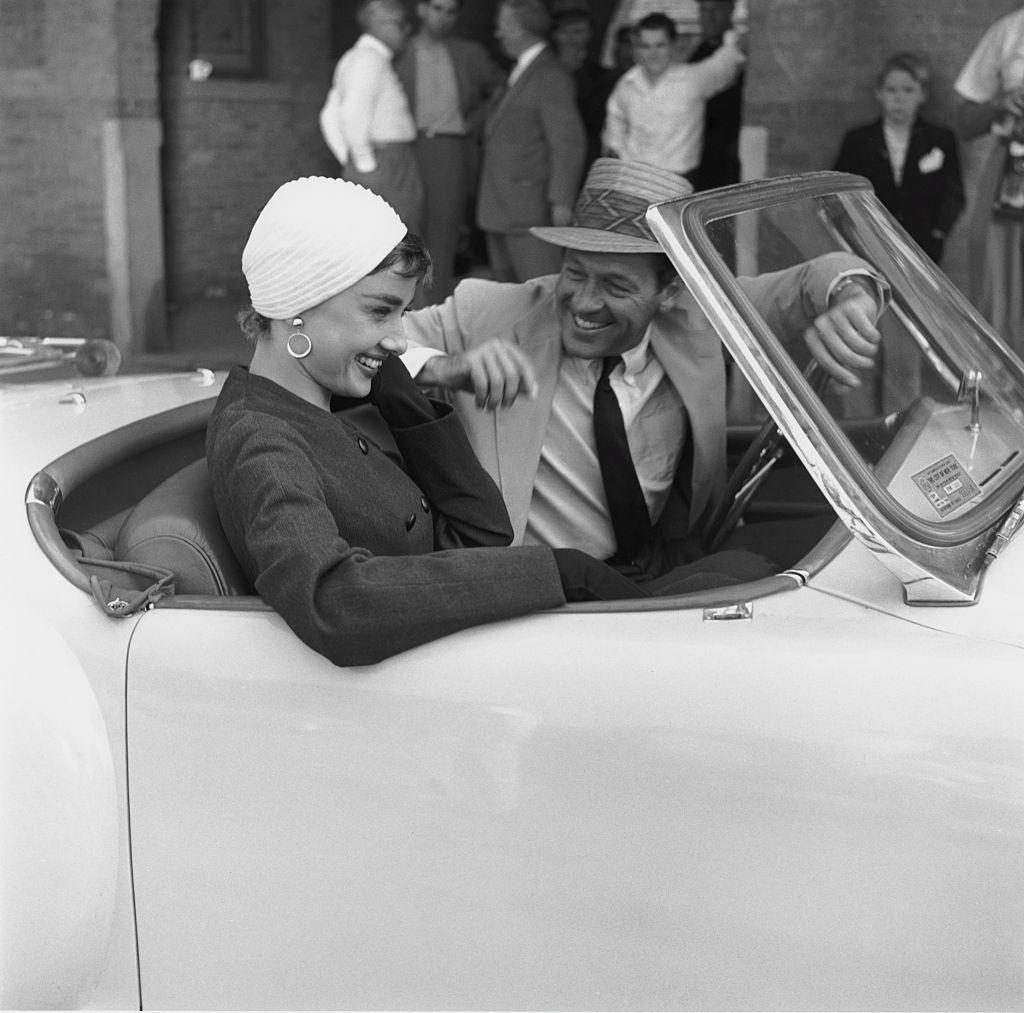
The 1954 version of “Sabrina” has a runtime of 113 minutes; 1995’s is 127 minutes long. However, the remake seems longer. Typical of a Billy Wilder production, the original’s pacing is very tight, effortlessly blending comedy with tenderness. The remake moves much slower, dramatizing characters, relationships, and subplots which were treated very lightly in the original. These stylistic differences reflect the eras in which the films were made.
The Code
In 1954, films had moral standards which were long forgotten by 1995. I refer to the Motion Picture Production Code, a set of movie content guidelines that were enforced by the Production Code Administration (PCA), Hollywood’s branch of the Motion Picture Association of America, now the Motion Picture Association.While the Code was officially in place from 1934 until being replaced by the current Classification and Rating Administration in 1968, it started weakening in the late 1950s after its original enforcer, Joseph I. Breen, retired as head of the PCA. Without his watchful leadership, the PCA fell apart, neglecting the Code until it became a joke. Ironically, the original “Sabrina” was released nationwide one day after Breen retired on October 15, 1954.
By the time the remake was released, all the principles which Breen’s PCA fought to maintain in films were not only gone but completely forgotten. The four current ratings were in place, and with them the modern-day film standards, or lack thereof.
“Sabrina” of 1995 was rated PG “for some mild language.” That language is approximately what you’d find in mid-1960s movies, not the worst words but far from Code standards of nothing stronger than “darn” and “heck.” Further, in Paris, Sabrina has an affair with a photographer, attempting to forget David; the situation is more than implied. When Bogart and Hepburn kiss, it is very tasteful and restrained, as the Code required. In contrast, when Ford and Ormond kiss, it is overly passionate. The position of the camera and microphone reveal how clearly the love scenes break the Code’s rule against kisses being “excessive, lustful, or open-mouthed.”
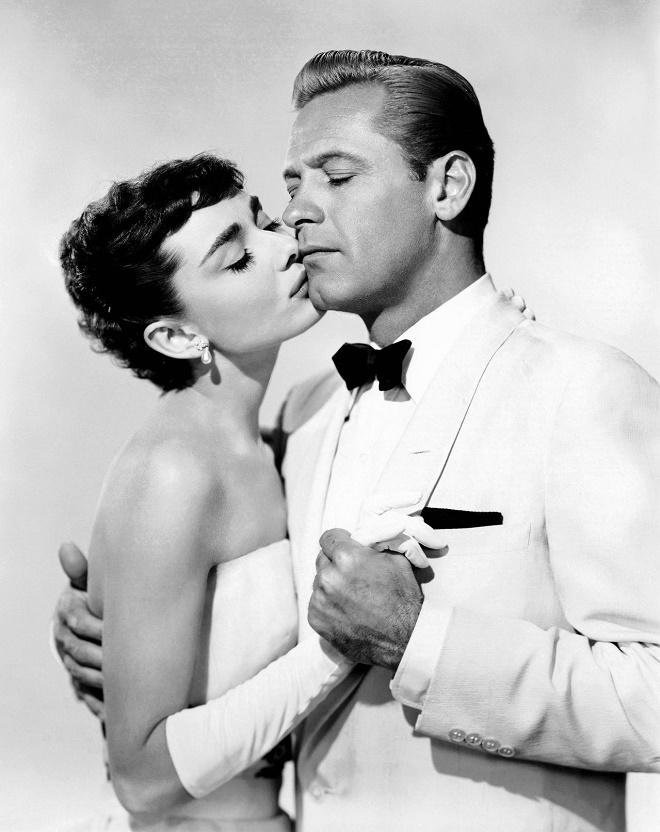
Less is More
Read any collection of reviews for “Sabrina” (1995), and you’ll see a pattern. “I like this movie, but it doesn’t compare to the original,” “She’s no Audrey Hepburn,” and “You just can’t beat a classic” are phrases which appear again and again. This film tried to compete with its famous predecessor by bringing new depth, plot twists, and character development. The stakes are higher. The emotions run deeper. The relationship development is more thorough. However, instead of improving upon the classic, they missed the mark in many ways.The title character was made plainer at the film’s beginning to heighten the drama of her transformation, yet nothing could top Audrey’s stylish return from Paris, even if the contrast wasn’t as stark. More time was dedicated to developing the relationships, yet the interactions are less endearing. The acting is noticeably more intense, yet many of the emotions aren’t as convincing. New plot points were added to deepen and clarify the story, yet many details remain vague and confusing. The lines which were changed to be more poignant lost much of their impact. Besides, how could the 1990s aesthetics compare with the glamorous 1950s?
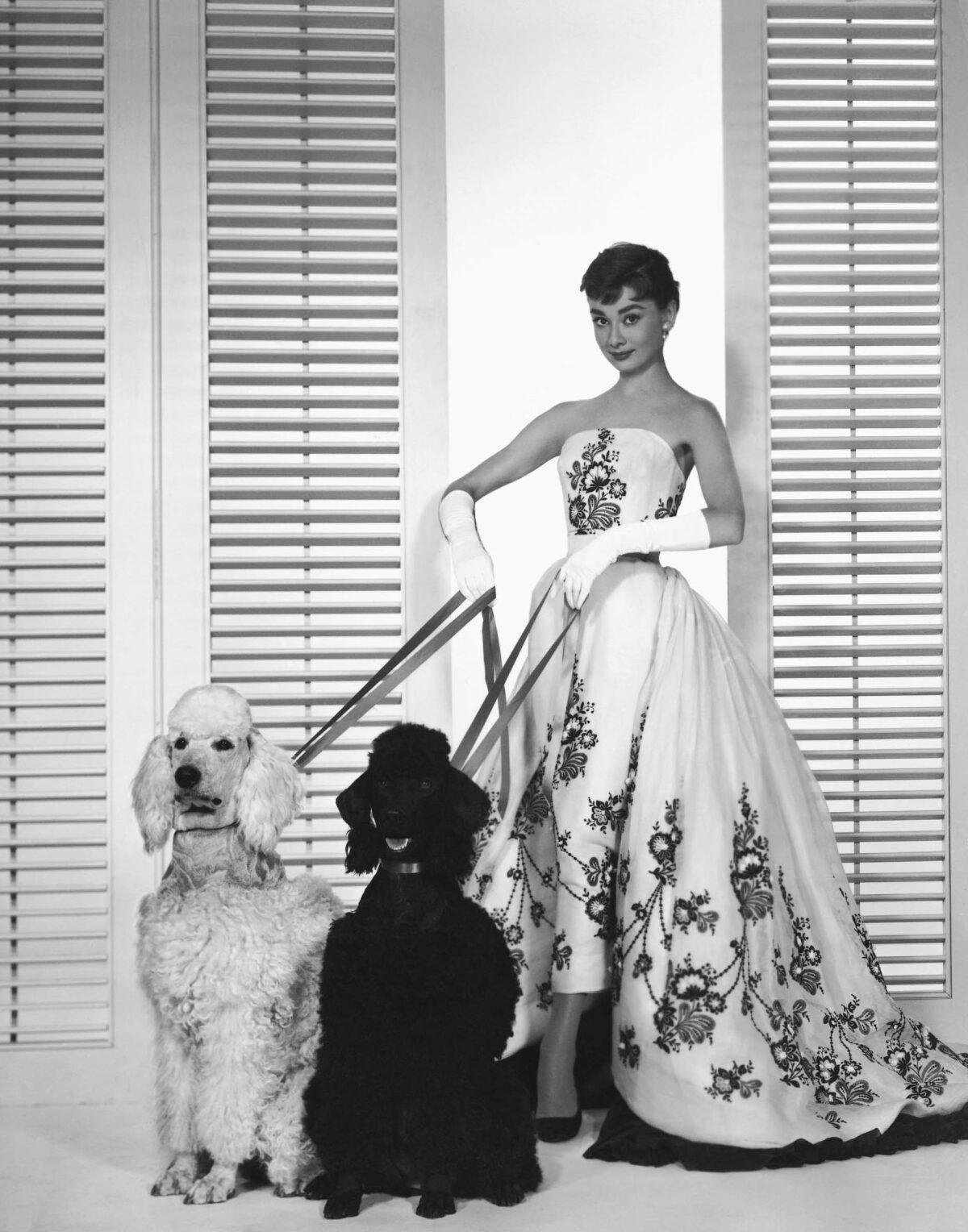
Ultimately, the later “Sabrina” will never be the classic which the earlier one remains today, almost seventy years after its making, because its makers didn’t realize that less is more. One of the original’s funniest moments was when David asked Linus why he was going to the office on Sunday, only to be blandly told by his older brother, “This is Wednesday.” The exchange was repeated in the remake, but Harrison Ford replied, “It’s Wednesday, David,” with such emphasis that the moment lost its hilarious candidness. The same is true of the Rating System values. The profanity and double entendres didn’t compare with Billy Wilder’s clever yet clean script, and the risqueity took the romance out of the love story. The story of “Sabrina” has endless charm, but any project that trades class and traditional values for cheap sensationalism will always be second-best.
